Blues maverick Jonathon Long shows you how to get more mileage from your guitar licks
The Baton Rouge bluesman shares his talent for transforming licks into a multitude of styles, from loping gospel sounds through Delta blues and slick country riffs
In keeping with his origins in Baton Rouge, Louisiana, Jonathon Long’s guitar style is a melting pot of the many strands of Americana. You can hear elements of Delta blues, gospel, Southern rock and country rock, all underpinned by the legacy of the great urban blues guitar legends - the three Kings, Collins, Buddy Guy.
In this lesson, Jonathon shows a few of his favorite licks, demonstrating how a simple idea can be extended, modified and combined with other ideas to create an almost limitless stock of licks.
All of these examples are in the key of A major, so you can immediately start dropping them into your blues solos.
Example 1 - Outlining A chord

Jonathon starts with a tiny cell of an idea that we’ll be using in later examples. It’s a cool way to outline an A major (or A dominant) chord, mostly using chord tones, but with a smooth line of chromatic pull-offs at the start. Notice the quick slide at the end: the minor 3rd (C) resolves into the major 3rd (C#).
Example 2 - Working with doublestops
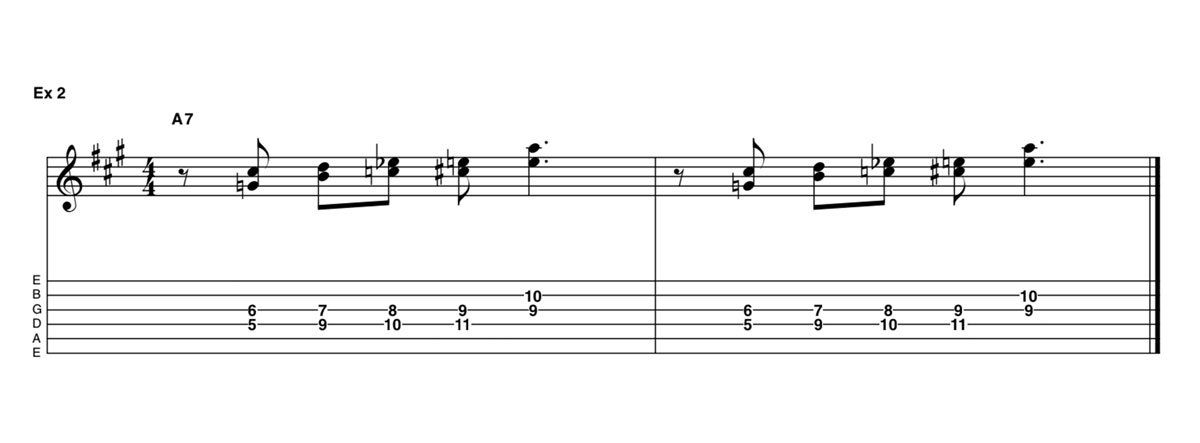
Here's another way of outlining that A major or A7 chord, again with chromatics. This time we’re using doublestops, and it’s important to note the chord tones at the beginning and end, all using chord tones. We start with G-C# (minor 7th and major 3rd) and end on C#-E (major 3rd and 5th) and E-A (5th and root).
Example 3 - Extending A line
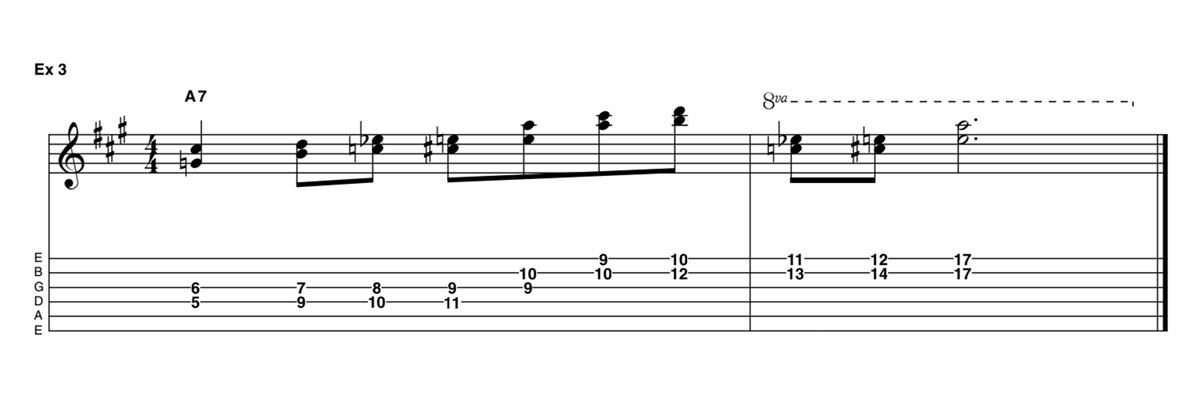
Now Jonathon builds a longer lick by extending the pattern from Example 2 into the next octave. The higher line is slightly different, starting with A and C# (root, major 3rd).
Example 4 - From gospel to country
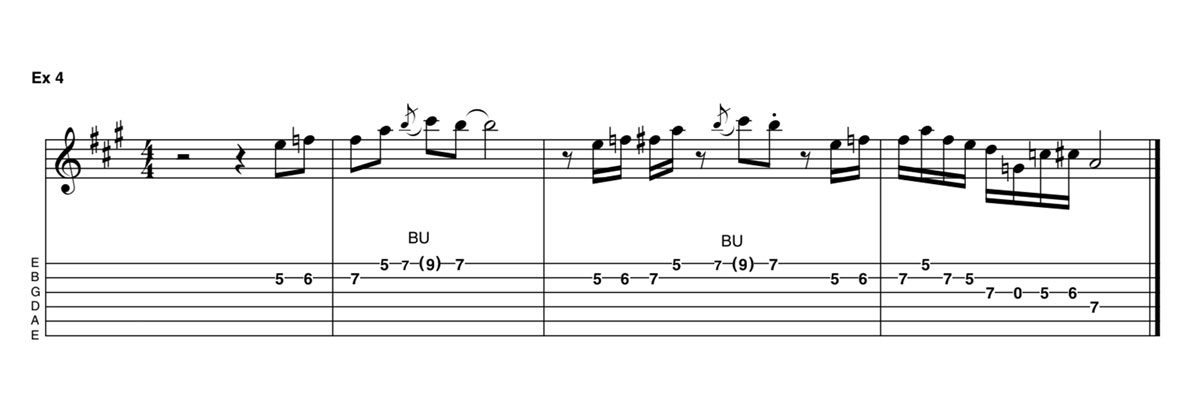
Jonathon mentions how his broad musical tastes allow him to reinterpret phrases in several different ways. He starts off with a lazy gospel-tinged line using the A major pentatonic (ABC# E F#) and speeds it up, using consistent alternate picking. As a result it ends up with more of a country or Western swing sound.
Example 5 - Three octave lines
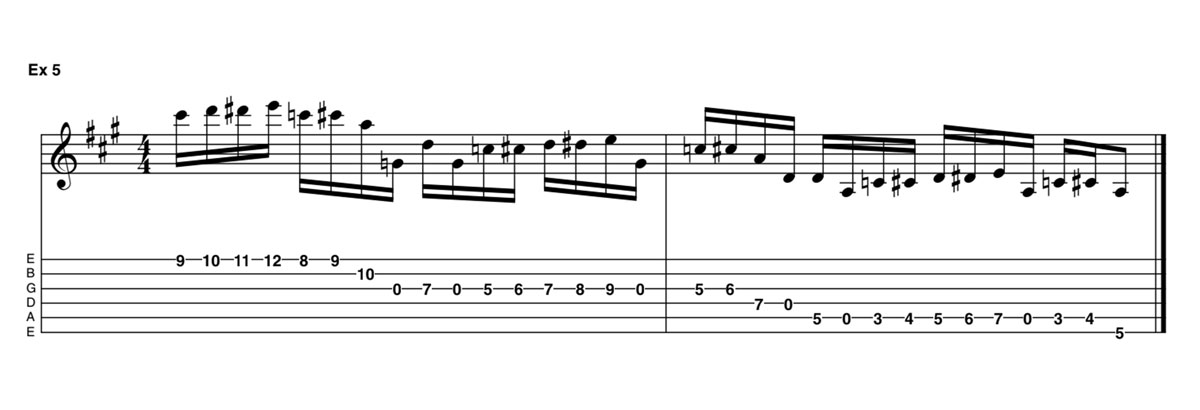
Using the same meaty flatpicking, we now return to the chromatic lick from Example 1, combining it with the idea from Example 4. It's basically the same pattern played through three octaves.
Example 6 - Embellishing diatonic chords
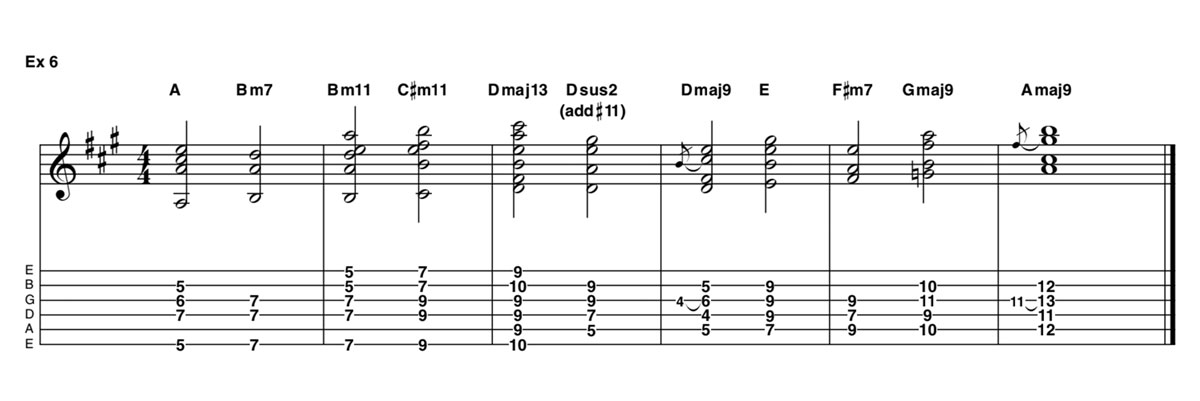
Jonathon shows the importance of knowing all the chords in a key. The basic diatonic chords in A major are A, Bm, C#m, D, E, F#m and G# diminished, but each chord can be extended in many ways. Also, within the blues style, you have the flexibility to play around with the minor 7th (G).
Example 7 - Putting it all together
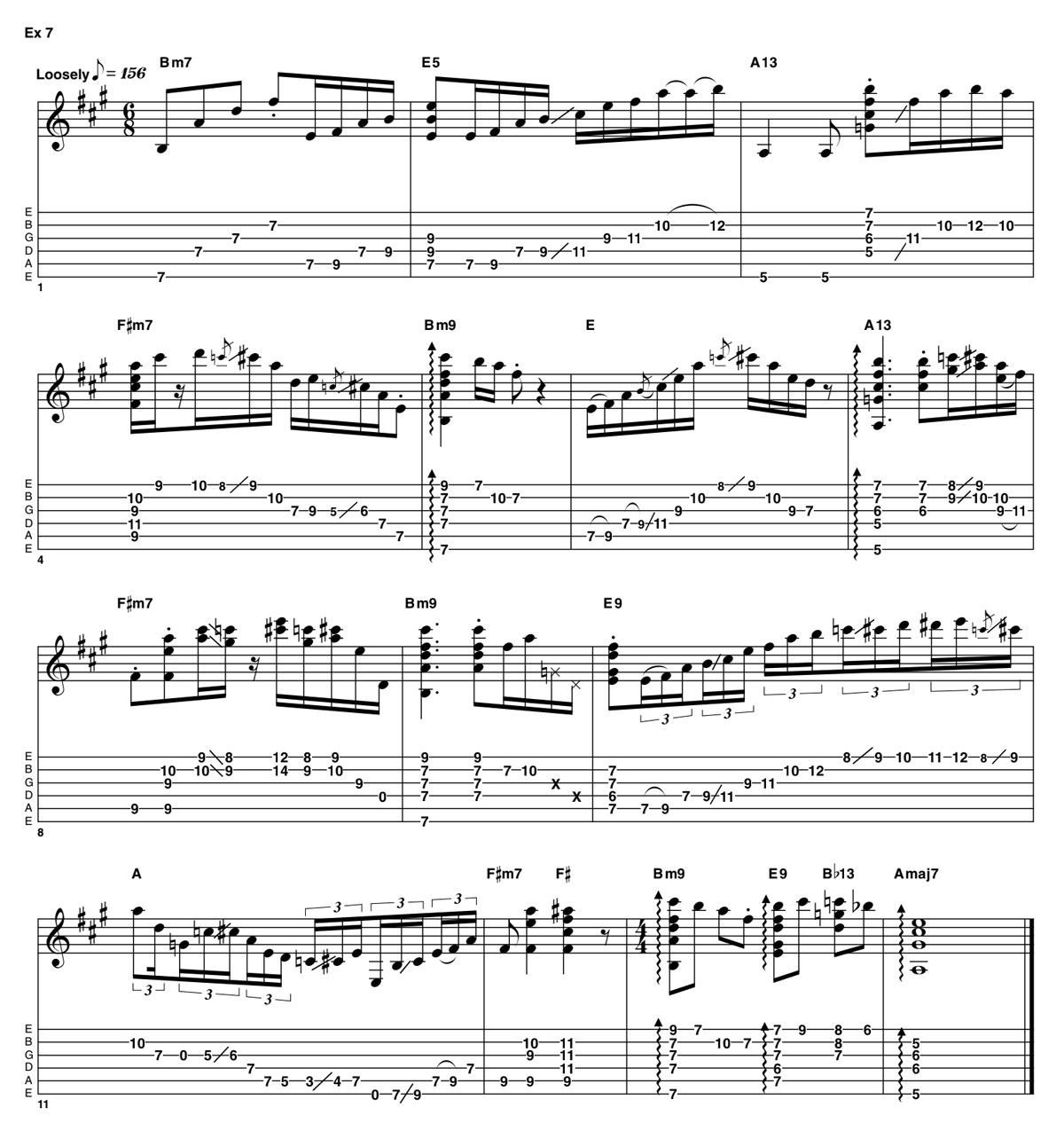
Jonathon improvises around a II-V-I-VI progression in A major (Bm-E7-A-F#m). In a bluesy interpretation of this common chord progression, the I chord is also played as a dominant (A7). The main scale here is A Mixolydian (A-B-C#-D-E-F#-G), but it’s more important to see it as shifting groups of chord tones.
If you're interested in hearing Jonathon Long discuss on his electrifying fusion of jazz, blues and country, check out our in-depth interview.
Get The Pick Newsletter
All the latest guitar news, interviews, lessons, reviews, deals and more, direct to your inbox!







![Joe Bonamassa [left] wears a deep blue suit and polka-dotted shirt and plays his green refin Strat; the late Irish blues legend Rory Gallagher [right] screams and inflicts some punishment on his heavily worn number one Stratocaster.](https://cdn.mos.cms.futurecdn.net/cw28h7UBcTVfTLs7p7eiLe.jpg)


